1. Automated Visual Inspections
AI-driven computer vision systems are now routinely used on production lines to inspect food products. These systems use cameras and deep learning to detect defects (e.g. bruises, size/shape irregularities), foreign objects, and packaging errors in real time. Operating much faster than humans, they can flag or remove defective items on-the-fly, improving throughput and consistency. Studies show these models can achieve very high accuracy (e.g., over 98% for certain fruit defect detection). In practice, adoption of such AI monitoring systems has surged (recent reports note ~35% growth in AI-driven food safety monitoring). In sum, AI-based visual inspection dramatically increases speed and precision of quality control with minimal human intervention.
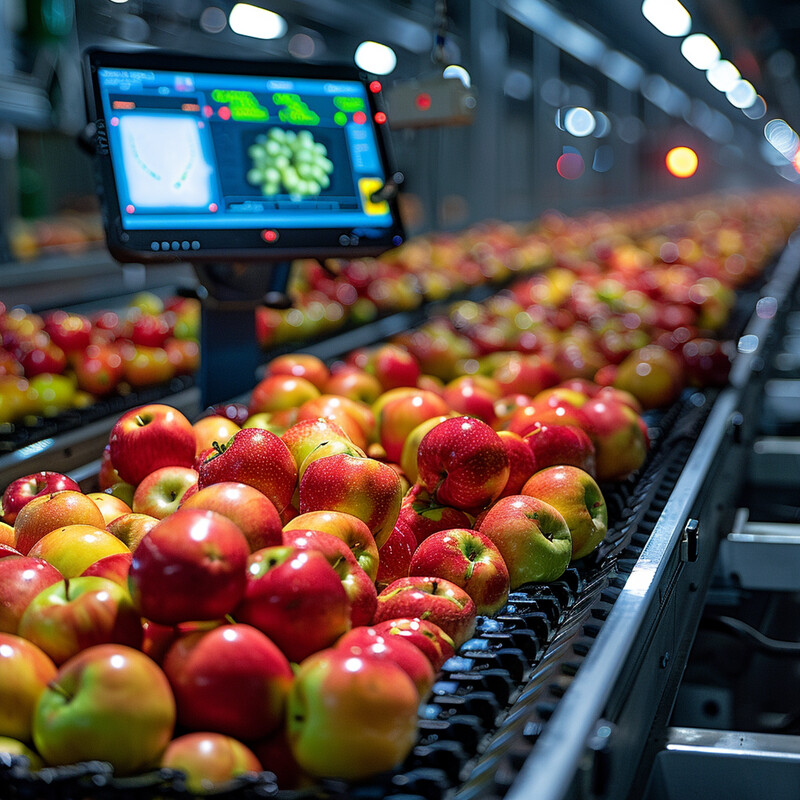
Modern vision systems combine high-speed cameras with convolutional neural networks (CNNs) trained on thousands of food images. They can, for example, identify surface defects on fruit or classify spoilage with remarkable precision. One study reported a CNN achieving ~98% accuracy in grading mango defects and 99.5% accuracy in spotting spoiled figs. These systems automatically eject non-conforming items immediately, reducing human error. Industry data highlight that such AI solutions are rapidly being adopted – a market report noted a 35% increase in AI-powered safety monitoring tools. Overall, automated vision inspection greatly reduces inspection times and false rejects, thereby maintaining consistent food quality and safety.
2. Predictive Contamination Modeling
AI-based predictive analytics use historical and real-time data to forecast contamination risks before they occur. By learning patterns from past outbreaks and operational data (temperature logs, ingredient sources, weather, customer complaints, etc.), these models can signal high-risk scenarios in advance. For example, an AI-driven risk prediction tool might analyze supply chain data and flag batches likely to carry pathogens, prompting preventive measures. In effect, predictive modeling shifts food safety from reactive to proactive. Experts note that such AI models “allow for the anticipation of food safety hazards” and enable early intervention.

Advanced models combine diverse inputs (farm, processing, lab, and market data) to predict issues. Reviews report that “big data analytics” can synthesize information across the entire supply chain to identify contamination risks and forecast future safety issues. In practice, AI systems might analyze variables like weather patterns, shipping delays, and supplier histories. Industry analyses confirm the impact: one report found AI-driven predictive analytics improved overall hazard detection accuracy by roughly 25%. By pinpointing likely problems (e.g. predicting a Salmonella outbreak in produce), these tools let processors take corrective action early. In short, predictive modeling with AI greatly enhances proactive risk management in food safety.
3. Temperature Monitoring
AI combined with IoT sensors enables continuous monitoring of storage and transport temperatures in the food cold chain. Smart sensors placed in refrigerated trucks and warehouses feed live data to AI platforms. These systems automatically alert operators to any temperature excursion (e.g. a door left open or cooling failure) so corrective action can be taken immediately. This constant oversight reduces spoilage and food safety risks. For instance, it is estimated that roughly 20% of temperature-sensitive products spoil in transit due to improper cooling. AI-driven monitoring can dramatically cut such losses by ensuring products stay within safe temperature ranges at all times.
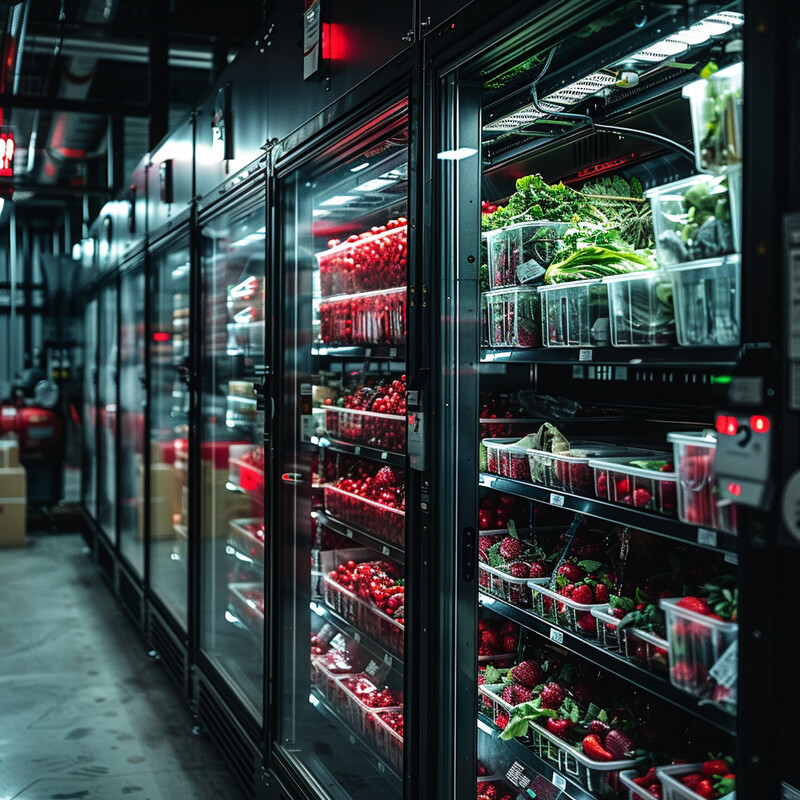
In practice, wireless temperature sensors record conditions 24/7 and transmit data to cloud-based AI analytics. These systems log and analyze trends to predict equipment failures or breaches. According to an industry analysis, about 20% of food spoilage is attributable to temperature fluctuations during shipping. By contrast, AI/IoT solutions provide automated alerts. One report notes that continuous sensor monitoring and instant alerts allow managers to prevent failures before they happen. In cold-storage facilities, real-time AI monitoring of temperature and humidity ensures optimal conditions and prevents contamination. These technologies have been shown to reduce waste by enabling faster response (one market study credits IoT packaging and monitoring with a ~20% reduction in spoilage).
4. Shelf Life Prediction
AI models improve shelf-life estimates by using real-time data instead of fixed “use-by” dates. By analyzing factors like microbial growth rates, gas emissions, and storage conditions, these models predict how long a product will remain safe. This dynamic prediction helps manufacturers and retailers schedule sales and distribution more accurately. As a result, products spend less time sitting unused or being discarded prematurely. In effect, AI shelf-life prediction reduces waste and ensures quality by aligning expiration estimates with actual conditions.
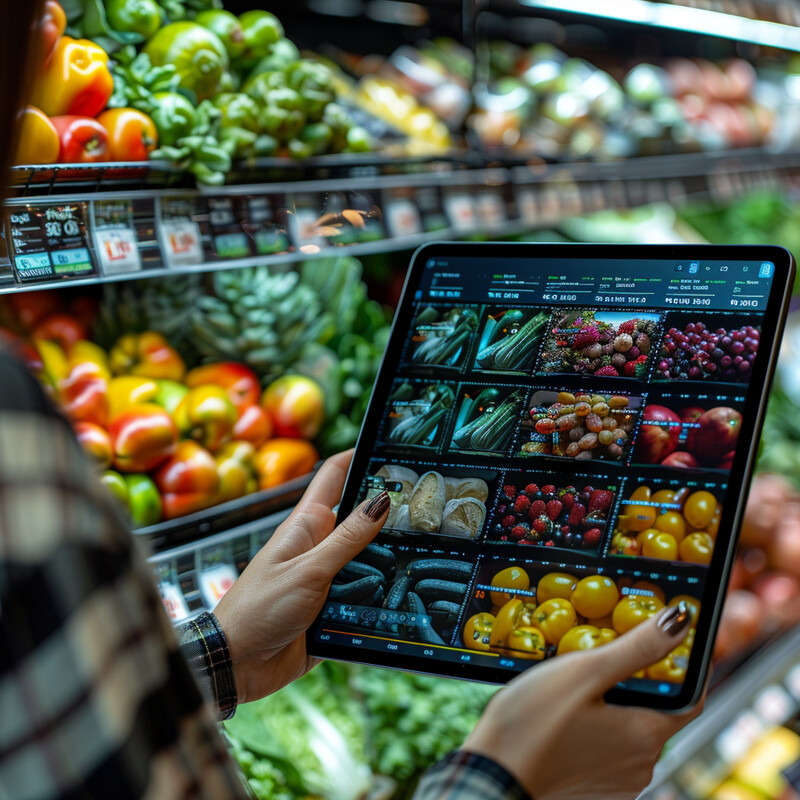
Dynamic shelf-life prediction can greatly cut waste. Currently an estimated 1.05 billion tonnes of food are lost globally each year, a sizable portion due to fixed-date mismanagement. AI algorithms leverage massive data (e.g. sensor readings, lab assays, historical spoilage patterns) to refine those estimates. For example, machine-learning models have predicted shelf life for fruits and vegetables with >98% accuracy in controlled studies. By updating predictions continuously, companies can optimize inventory and rotation. A recent review calls this approach a “paradigm shift” that “maximizes shelf life, reduces economic losses and waste” through intelligent evaluation. In practice, early adopters report lower waste and more consistent quality when using AI-driven shelf-life models.
5. Supply Chain Transparency
AI, often paired with IoT and blockchain, enhances traceability from farm to table. Every step—ingredient sourcing, processing, and distribution—can be digitally recorded and analyzed. AI systems track these records to ensure transparency: if contamination is found, they can pinpoint the origin instantly. For example, IoT sensors continuously log conditions, while blockchain provides an immutable record of each batch’s history. In practice, such systems allow companies to quickly verify provenance and compliance. In summary, AI-enabled traceability shortens the time to respond to safety issues and improves consumer trust by making the supply chain open and verifiable.
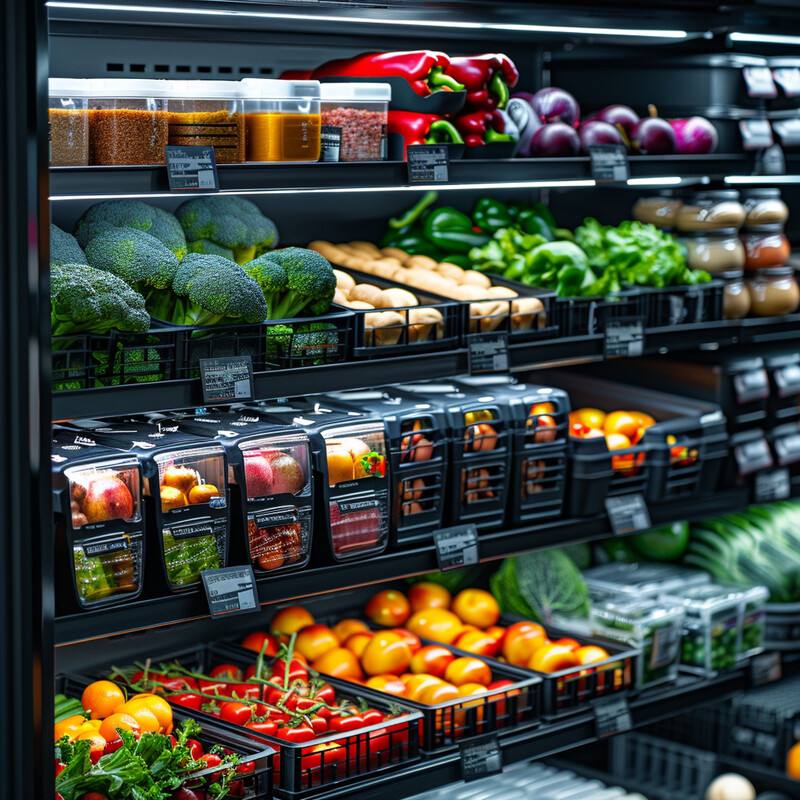
Emerging systems integrate smart sensors and ledger technology. One review notes that IoT-enabled cameras and sensors give real-time updates on factors like temperature and location, while blockchain “records every step securely” to maintain an unbreakable chain of custody. For instance, advanced smart packaging solutions now incorporate IoT tags that monitor freshness and temperature; adoption of such technologies is growing (~35% more smart packaging in recent years) and has cut spoilage by ~20% in pilot uses. On the blockchain side, studies emphasize that a decentralized ledger creates an “immutable record from production to consumption,” enabling rapid identification of any contamination source. Together, these tools greatly improve the speed and accuracy of recalls and audits across the global food supply.
6. Real-Time Pathogen Detection
AI technologies enable much faster detection of pathogens compared to traditional lab methods. For instance, combining advanced sensors with machine learning allows on-site screening of products. A recent study showed that using Raman spectroscopy with deep learning, multiple foodborne pathogens could be identified with ~98.4% accuracy. Instead of culturing samples for days, these AI-driven tests analyze spectroscopic “fingerprints” of microbes in minutes. In summary, AI-powered detection means contaminated products can be spotted almost immediately, significantly reducing the risk of contaminated food reaching consumers.
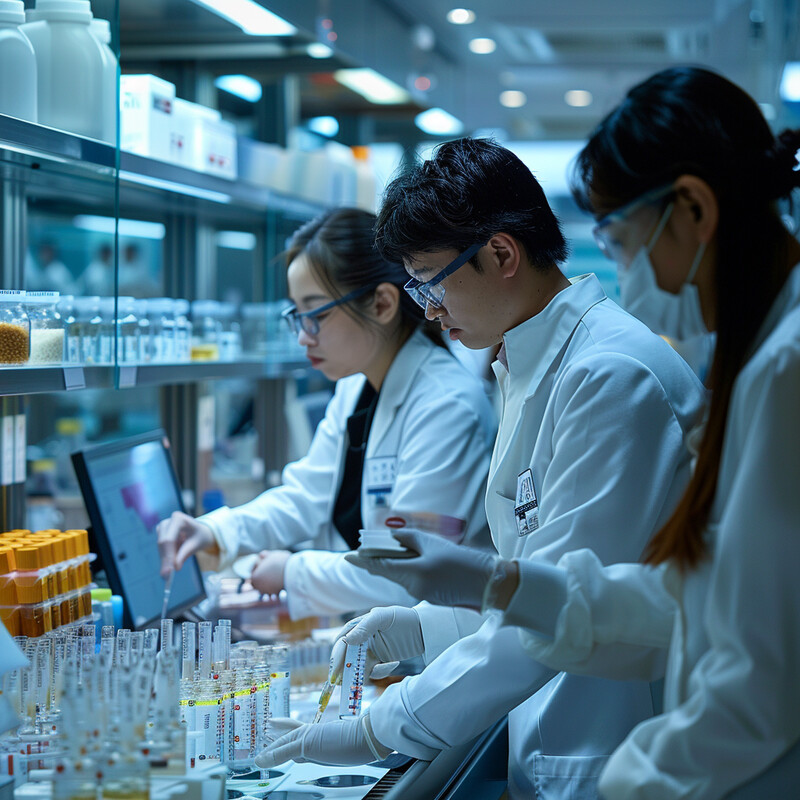
Experimental systems exemplify this speed and accuracy. In one reported case, a deep-learning model interpreting Raman spectra correctly identified pathogen serotypes with 98.4% accuracy. Another AI approach uses image analysis: convolutional neural networks applied to hyperspectral images detected adulteration or contamination at ~99.85% accuracy. Such results underscore the potential of AI to vastly outperform conventional testing. These rapid methods have already been deployed; for example, handheld surface-enhanced Raman devices are used in China to test milk for melamine on-site. Given that an estimated 1 in 6 Americans suffer foodborne illness each year, these real-time AI assays could greatly reduce outbreak size by catching problems before products ship.
7. Consumer Feedback Analysis
AI-powered natural language processing (NLP) tools scan customer reviews, social media posts, and complaint logs for safety concerns. These systems can automatically flag mentions of illness, spoilage, or contamination in vast text datasets. For example, health agencies have experimented with AI that classifies restaurant review text to find outbreak signals. In effect, AI magnifies the “crowdsourcing” power of consumers: patterns in feedback that would be impossible for humans to sort through are quickly detected. This allows companies and regulators to investigate issues proactively based on consumer reports.
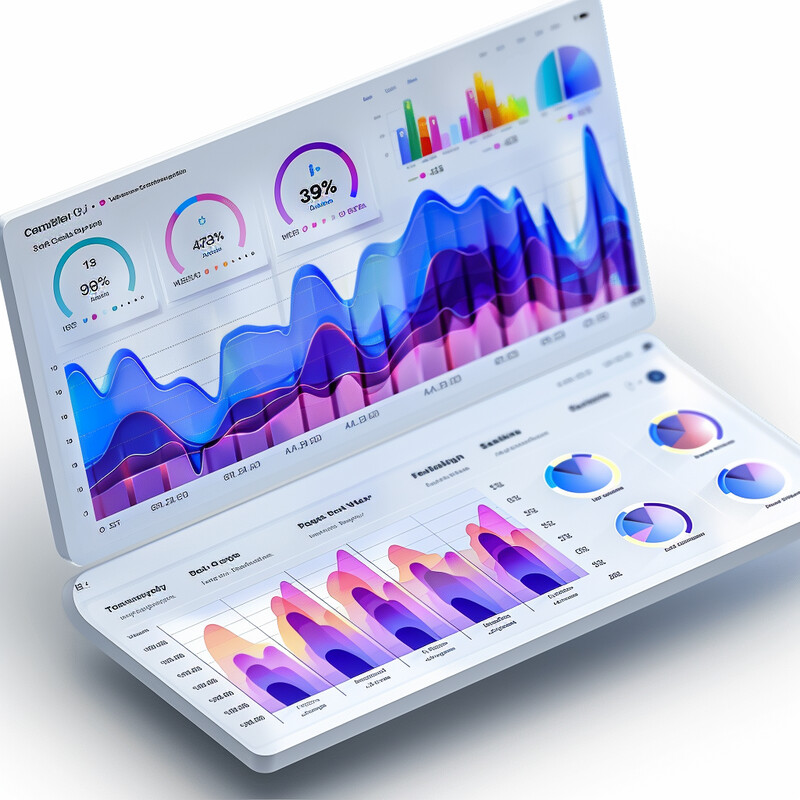
Research demonstrates that NLP can successfully mine unstructured text for insights. One analysis notes that AI “enables machines to understand and … analyze consumer feedback and extract suggestions” from large comment pools. In practice, this means automatically summarizing thousands of reviews to highlight complaints about safety. In 2025, the UK Health Security Agency assessed AI models on online restaurant reviews to see if they could speed up outbreak detection. Such AI systems can score and categorize feedback by severity or keyword (e.g. “food poisoning”), alerting inspectors when multiple reports concentrate on one venue or product. By turning anecdotal feedback into actionable data, these tools provide a new layer of surveillance between official inspections.
8. Sanitation and Hygiene Monitoring
AI-driven monitoring systems oversee sanitation processes and worker hygiene to prevent contamination. For example, computer vision can check that employees wash hands properly or wear gloves and hairnets. These systems provide real-time feedback or alerts if protocols are missed. Because they work continuously and objectively, AI monitors greatly reduce lapses in cleaning or personal hygiene that human supervisors might overlook. In summary, AI enforces sanitation rules more rigorously by automatically detecting and correcting hygiene violations in real time.
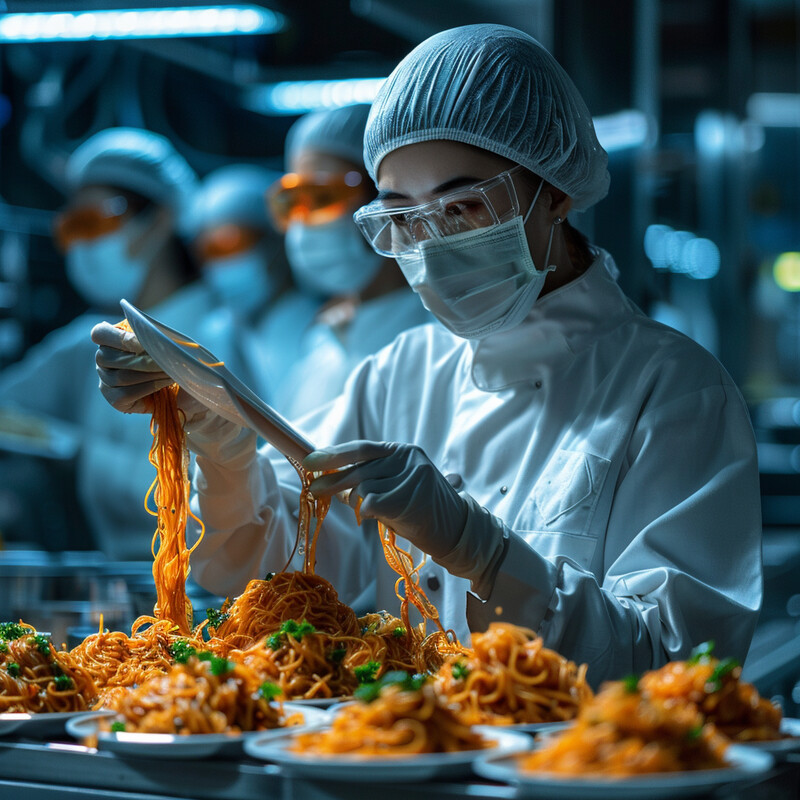
Emerging projects highlight practical impact. In one case, an Australian meat packing plant installed an AI-based camera system in its sanitation area: the system prompts staff to follow hygiene processes and uses cameras to “assess employees for compliance in handwashing procedures, foreign object control, and the use of personal protective equipment”. Research also shows video analytics can improve hand hygiene: a multi-camera recognition system was reported to significantly enhance handwashing compliance in a food-safety setting. Such AI tools supplement traditional audits by verifying that sanitizers and UV cleaners are used correctly and that work areas stay uncontaminated. Overall, AI monitoring promotes thorough, consistent sanitation practices and provides data for continuous improvement.
9. Regulatory Compliance Automation
AI helps automate compliance tasks such as auditing records, verifying supplier documentation, and labeling products correctly. For instance, AI tools can parse regulatory texts and cross-check a product’s ingredients or processes against the rules. They can auto-generate Hazard Analysis and HACCP plans or answer compliance questions via chat interfaces. This streamlines burdensome paperwork and ensures more consistent adherence to laws. In effect, AI compliance platforms keep pace with evolving regulations by quickly analyzing data and flagging gaps that human review might miss, helping companies stay “audit-ready” without constant manual effort.
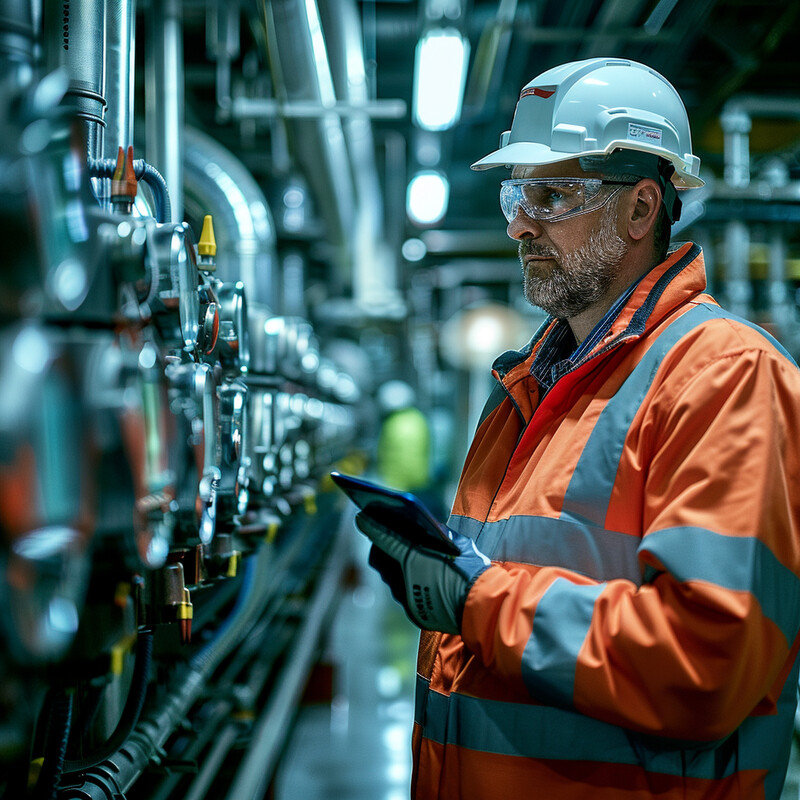
Several AI-enabled software solutions are on the market. One example is a compliance “intelligence hub” that integrates thousands of data sources: it screens production and lab data for risks and also includes a “Regulatory Intelligence Hub” where AI searches a global database of standards and requirements. Another platform offers an AI assistant (GPT-like) to answer regulatory queries with citations from law texts. In practice, these systems can automate label generation, allergen checks, HACCP plan updates, and supplier audit tracking. This is crucial given the regulatory trend: a recent analysis found over 60 countries have enacted stricter food safety laws in recent years. By automating data research and documentation, AI tools significantly reduce compliance errors and administrative load.
10. Food Fraud Detection
AI is increasingly used to detect adulteration and fraud in food products. Advanced sensors (like spectrometers or NMR) gather chemical signatures of a product, and AI/ML algorithms analyze that data for anomalies. For example, a neural network can examine an oil sample’s spectral profile to see if it’s been diluted. AI can also spot unusual patterns in trade data that suggest fraud. Overall, these AI methods make it much harder for low-quality or counterfeit products to go unnoticed, protecting consumers and honest producers.

AI-enhanced analysis yields very high accuracy in fraud tests. One reported approach used convolutional neural networks on hyperspectral images to find adulteration with ~99.85% accuracy. Spectroscopy also plays a role: near- and mid-infrared scanners, coupled with chemometric models, can differentiate pure foods from adulterated ones. For instance, FT-IR spectroscopy distinguished extra-virgin olive oil from blends at just 7% adulteration, and portable NIR devices can age-verify meat with ~95% accuracy. These AI-driven tools flag counterfeit ingredients in real time. Such precision is important given the scale of the problem: FDA estimates food fraud affects about 1% of the global food supply (roughly $10–$15 billion/year). By rapidly analyzing composition and supply-chain anomalies, AI helps intercept fraud before products reach consumers.